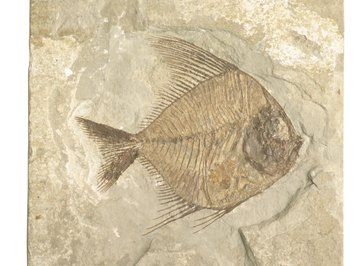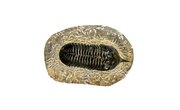
A fossil is the physical evidence of any plant or creature that once lived on Earth. It may be an actual remain, such as bones or leaves, or the result of activity, such as footprints. A preserved fossil, also known as a "true form fossil," is one that remains intact, or nearly intact, because of the method in which it was fossilized. Preserved fossils are rare; most fossils suffer damage from weathering and sedimentation before they are discovered.
Age of a Fossil
The term "fossil" is generally applied to discoveries of previous life forms dating back at least several thousand years. According to Palaeobotanical Research Group, the oldest fossils on record are nearly 3.5 billion years old. They are microfossils in the algae family. Fossils of complex, multi-cellular life forms date back 600 million years.
Preservation With Alteration
The two main types of fossil preservation are those developed over time with alteration and those without the effects of alteration. Fossil preservation with alteration is more common. The original life form is partially or completely changed into new material. This includes petrifaction, carbonization or recrystallization of the original organic matter. Another example of alteration is replacement. That's when the hard part of the life form is replaced by a new mineral. For example, petrified wood comes from a tree in which the wood is entirely replaced with silica.
Preservation Without Alteration
Fossil preservation without alteration means the state of the original organic matter remains unchanged. Fossils typically discovered intact include bones, shells and teeth. One process that result in fossils remaining intact is called Amber. The organic matter, such as an insect, is surrounded by a natural tree resin that hardens around the object preserving it. Ice also preserves animals and plants. The wooly mammoth, extinct for thousands of years, has been found well preserved in Siberian glaciers. Other preserved fossils are discovered in tar pits where sticky oil is credited with preventing decay.
Importance of Fossils
Fossils are valuable pieces of a universal puzzle that allow palaeontologists, and other scientists, to learn about biological organisms that existed in a period of time that predates ours. Understanding ancient life and the environment in which it existed helps explain climate changes, how life adapts and collapses, and geological and geographical changes.
References
Photo Credits
Hemera Technologies/PhotoObjects.net/Getty Images
